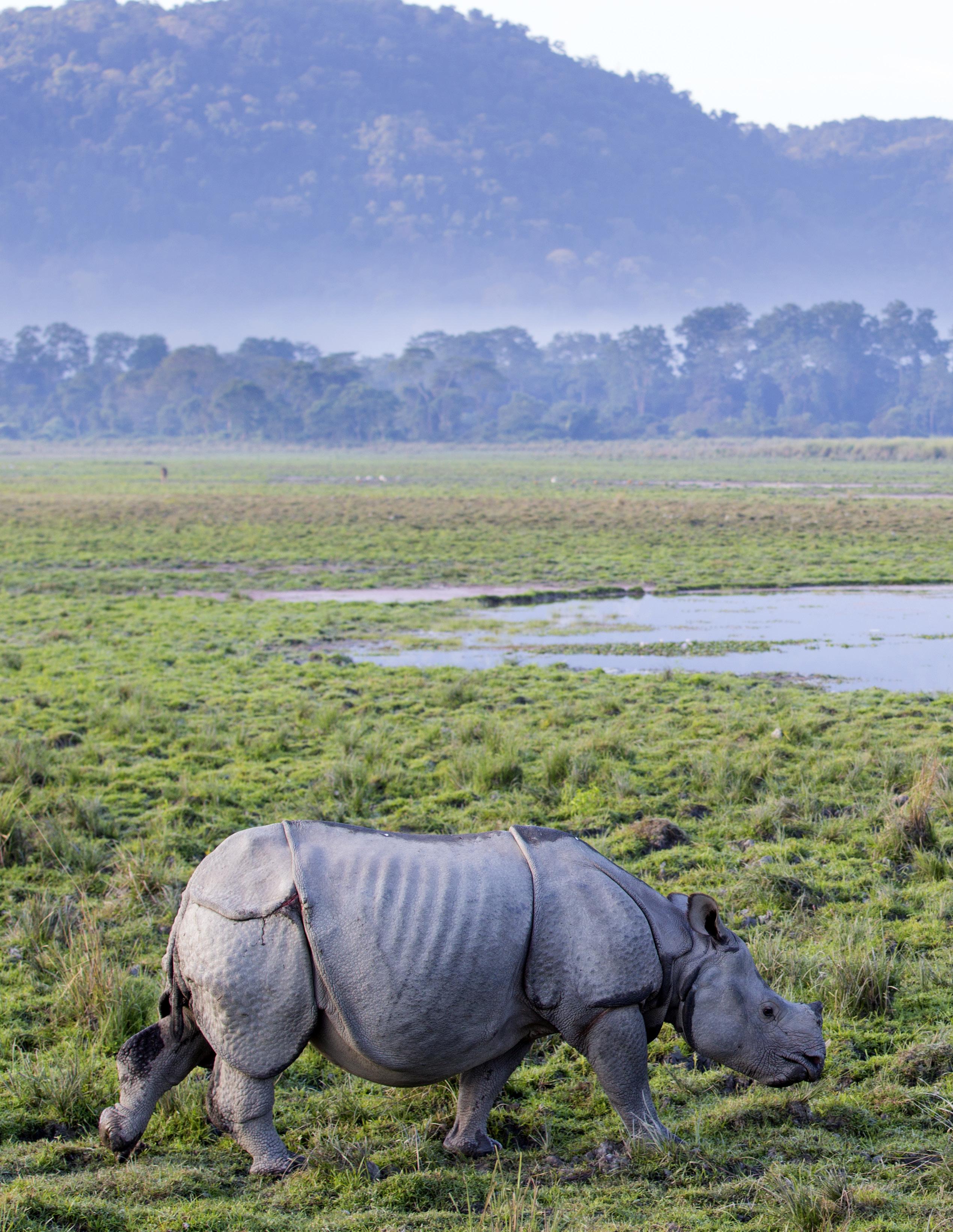
2 minute read
Assam: The India Nature Destination You've Been Missing
By John McMahon
Considered to be one of the great rivers of Asia, the Brahamaputra is formed from the waters of the Angsi glacier high in the northern Tibetan Himalayas, where it flows easterly through India and Bangladesh and meets the sea at the end of its 1,100 kilometer course. The river has many names but its Indian name, Brahamaputra, meaning son of Brahma, gives it a rare masculine aspect among bodies of water in India, perhaps due to the fierce rapids that dominate much of its course. It’s those rapids, along with the pristine surrounds of the river, which attract kayakers and rafters from around the world to paddle class IV and V rapids.
A wide range of outfitters offer multi-day and even multi-week tours giving visitors the ability to splash, swirl, and jostle their way through as many as 200 kilometers of river basin jungle with overnight stops on sand beaches, surrounded by mountain vistas and traditional villages along the banks. Travelers have the option of going up river on luxury cruise boats which transport passengers back to a more genteel time, with white-suited staff serving high tea on-deck between stops at national parks, colonial era tea estates, the ancient Ahom ruins at Sivasagare, and Majuliu Isle.
There’s a plenitude of national parks in Assam which harbor a rich diversity of some of the rarest wild animals on earth, but only Kaziranga and Manas parks provide much refuge for the Indian long-horned rhino. Kaziranga may have the widest diversity of flora and fauna of any preserve in India. Originally set aside to combat poachers in 1908, it was officially made a national park in 1974. Home to elephants, sloth bears, hog deer, and Holock gibbons, it is especially famous for its abundance of the Indian long-horned rhino.
Safaris in the park offer the opportunity to view the animals in their natural habitat including extremely rare sightings of Bengal tigers. The park is accessible by air, road, and boat via the Brahmaputra River. Less accessible but equally as important for habitat and animal preservation is Manas National Park in the foothills of the Himalayas, straddling the Bhutanese border.
A UNESCO natural World Heritage site, it functions both as a tiger and elephant preserve. Though once home to a thriving population of rhinos, the park’s herd suffered from cross-border strife and is now being reintroduced with animals from Kaziranga.
The combination of staying at the national park paired with a night safari gives visitors the best opportunity to view rare and elusive birds and animals including the endangered golden langur.








